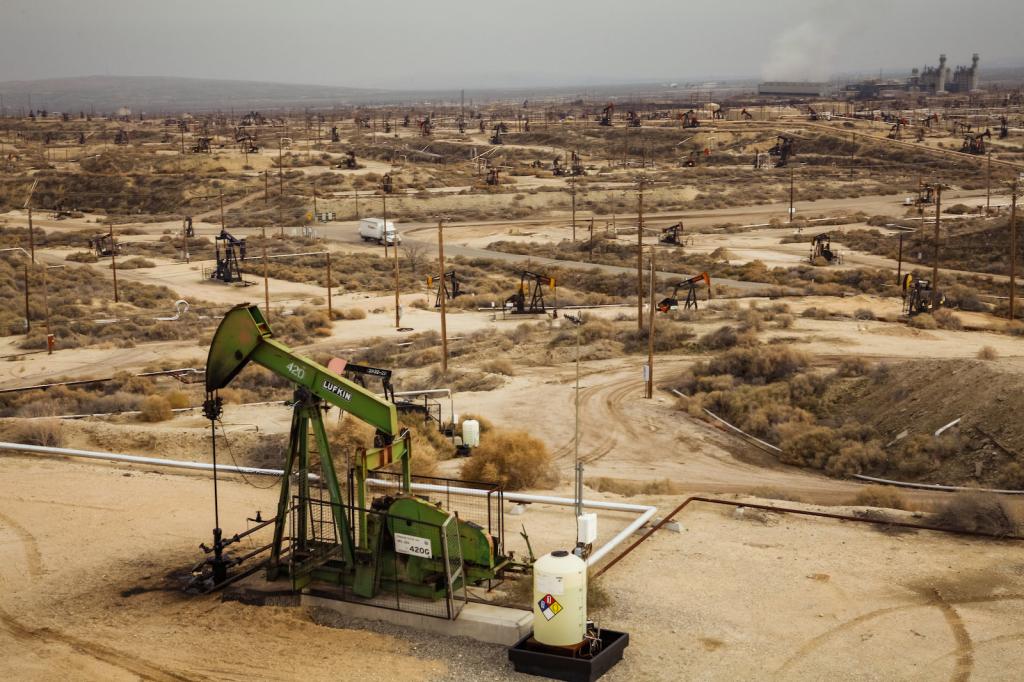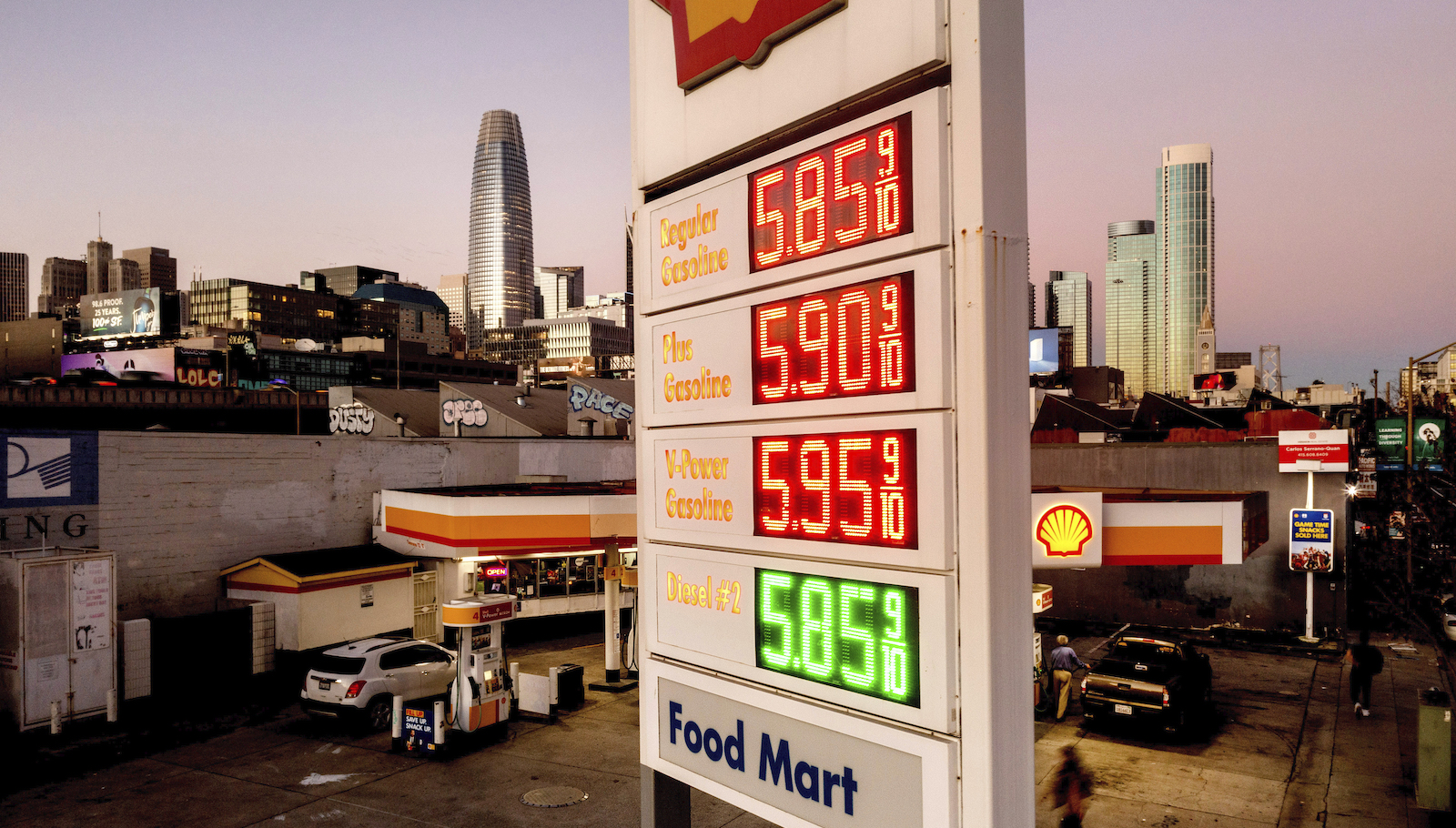As Americans face $5 per gallon at the pump and warnings of 50 percent increases to their home heating bills this winter, the country is getting a taste of the risks of a poorly managed energy transition. One of the scariest parts of transitioning away from fossil fuels is the risk that governments will fail to manage the delicate dance between winding down supply and demand. Lower supply too fast without ramping up clean options in parallel, and people who still rely on fossil fuels — which right now is pretty much everyone — will face energy shortages and sky-high prices.
As gasoline prices flew up over the last few months, Republicans from fossil fuel–rich states, such as Senator John Barasso from Wyoming, began exploiting that fear by condemning President Joe Biden’s climate policies. In a recent speech on the Senate floor, Barasso laid into Biden for his “attack on American energy,” naming the president’s cancellation of the Keystone XL pipeline, the administration’s temporary pause on oil and gas leasing, and a recent report from the Department of Interior recommending higher fees for drilling on federal lands.
But while these actions might limit oil and gas production in the future, none of them have to do with the current squeeze causing prices to rise. And in fact, experts argue that the rest of Biden’s climate agenda, much of which is included in the $1.85 trillion Build Back Better Act that passed the House in November, will provide precisely the right tools to insulate Americans from similar price swings in the future.
Oil and gas prices are up because drillers idled their wells and laid off thousands of workers in 2020 when demand dropped due to the COVID-19 pandemic. Demand has rebounded and production has not kept pace, leading to tight global supplies of oil and gas and high prices.
The reasons production has been slow to return are complicated. The Organization of the Petroleum Exporting Countries, or OPEC, along with Russia, decided earlier this year that they would bring production back online incrementally, increasing supply by 400,000 barrels per day each month. The group has thus far refused Biden’s pleas to ramp up faster.
Meanwhile, U.S. oil and gas companies are having trouble finding qualified workers and accessing credit, according to a survey released by the Federal Reserve Bank of Dallas in September. Some reported they were holding back production, skeptical that the high prices would stick. Companies are also paying out profits to their shareholders rather than investing it back into production. After nearly a decade of making little money from oil and gas companies due to the fracking boom that flooded the market with cheap energy, investors are pressuring companies not to grow production too quickly.
Severin Borenstein, an economist at the University of California, Berkeley’s Haas School of Business, argues in a recent blog post that gasoline prices are not as high as they seem. Adjusted for inflation, prices are still lower than they were for several years after hitting record highs right before the 2008 financial crisis. He finds that the majority of households will still spend less of their income on gasoline than they have, on average, over the last 17 years.
Borenstein writes that there’s no point in Biden trying to address high prices by, for instance, releasing oil from the Strategic Petroleum Reserve, a stockpile of oil overseen by the Department of Energy. (Biden announced he would release 50 million barrels just before Thanksgiving, but it was not expected to make a big dent in gasoline prices.) The real problem to work on, Borenstein argues, is widening income inequality.
“What we need to address is the everything affordability crisis for people being left behind, with stronger social programs, educational options, and job opportunities,” he writes.
Many families who couldn’t afford to pay their utility bills during the pandemic are entering the winter months still steeped in debt. Households around the country owe approximately $20 billion total, which is more than 60 percent higher than average, according to the National Energy Assistance Directors Association, an organization of state-level officials.
The White House is trying to ensure that people aren’t forced to make choices between staying warm or buying food this winter by encouraging states, localities, tribes, and utilities to plan early and proactively administer new funding from the American Rescue Plan, a coronavirus relief bill that Congress passed in March. The bill provided an additional $4.5 billion on top of the $3 billion to $4 billion allocated annually to help low- and middle-income families pay their utility bills. It also infused $21.5 billion into the Emergency Rental Assistance program, which can be tapped to help renters pay for home energy.
Still, experts say more is needed. The National Energy Assistance Directors Association sent a letter to Congress in October asking for an additional $5 billion to help low-income households cover energy costs.
But current trends indicate that this may not be a short-term problem that one cycle of extra safety net spending can fix. Investors and lenders are starting to move away from financing oil and gas production due to mounting social and political pressure to stop funding fossil fuels.
“There is a huge dearth of financing in the sector,” said Amrita Sen, chief oil analyst at Energy Aspects, an energy research firm, speaking on Columbia University’s Energy Exchange podcast. While finance is drying up, Sen said, demand for fossil fuels has not yet budged. Thanksgiving air travel was nearly at pre-pandemic levels, and highway traffic is back too. While electric vehicle sales are growing, they still represent less than 1 percent of the global car stock. Approximately 60 percent of U.S. homes are heated with oil, propane, or natural gas.
Climate change itself also threatens to strain the market. Another contributing factor to the current price spike is colder-than-normal temperatures last winter that depleted stores of natural gas as people burned it for heat, followed by record high temperatures this summer that ran up natural gas–fired electricity consumption. Together, these weather trends meant natural gas stores were not replenished.
“We know we will see more climate-related weather events along these lines,” said Sara Baldwin, director of electrification policy at Energy Innovation, an energy and climate think tank. “So the cycle is only likely to continue and get worse over time if we continue to remain wholly reliant on gas and oil.”
Baldwin applauded the short-term fixes that the Biden administration is pushing, but she argued that the best way to help insulate Americans from the volatility of the oil and gas market is to help them electrify their cars and homes. If you are totally reliant on a supply of gasoline to get around or natural gas to heat your home, you are subject to the whims of the market. But the electricity system is growing increasingly diversified, supplied by a mix of wind, solar, hydropower, geothermal energy, and nuclear, in addition to fossil fuels, padding it from sudden price swings.
The Build Back Better Act, the social spending and climate bill that passed the House in November, contains billions of dollars that would help Americans make the switch. It offers up to $10,000 per home in rebates for insulation, electric appliances like heat pumps and induction stoves, and electrical panel upgrades to support those new appliances. The rebates bump up to a $14,000 maximum for low- and middle-income households, multifamily buildings, and tribal communities. There’s also $5.89 billion in rebates for other measures that increase energy efficiency, which will lower people’s utility bills.
It’s not just homes. The bill would also increase rebates for electric vehicles — new and used — and make them fully refundable, meaning Americans would be able to claim the full amount no matter what their tax liability is. And to Borenstein’s point, the legislation would also create an estimated 2 million jobs and expand job training programs.
In a world where the bill passes the Senate, and many Americans take advantage of these programs, those who don’t might continue to be saddled with high prices if oil and gas supplies remain tight. Baldwin says policymakers need to work to make sure that the most vulnerable populations are being prioritized first in the transition.
There’s also a risk that sustained high prices could cause governments to cave on their climate plans and use policy tools to expand oil and gas production. “It will require leadership on all fronts to ensure that we don’t just continue to dig the hole deeper,” said Baldwin.



